




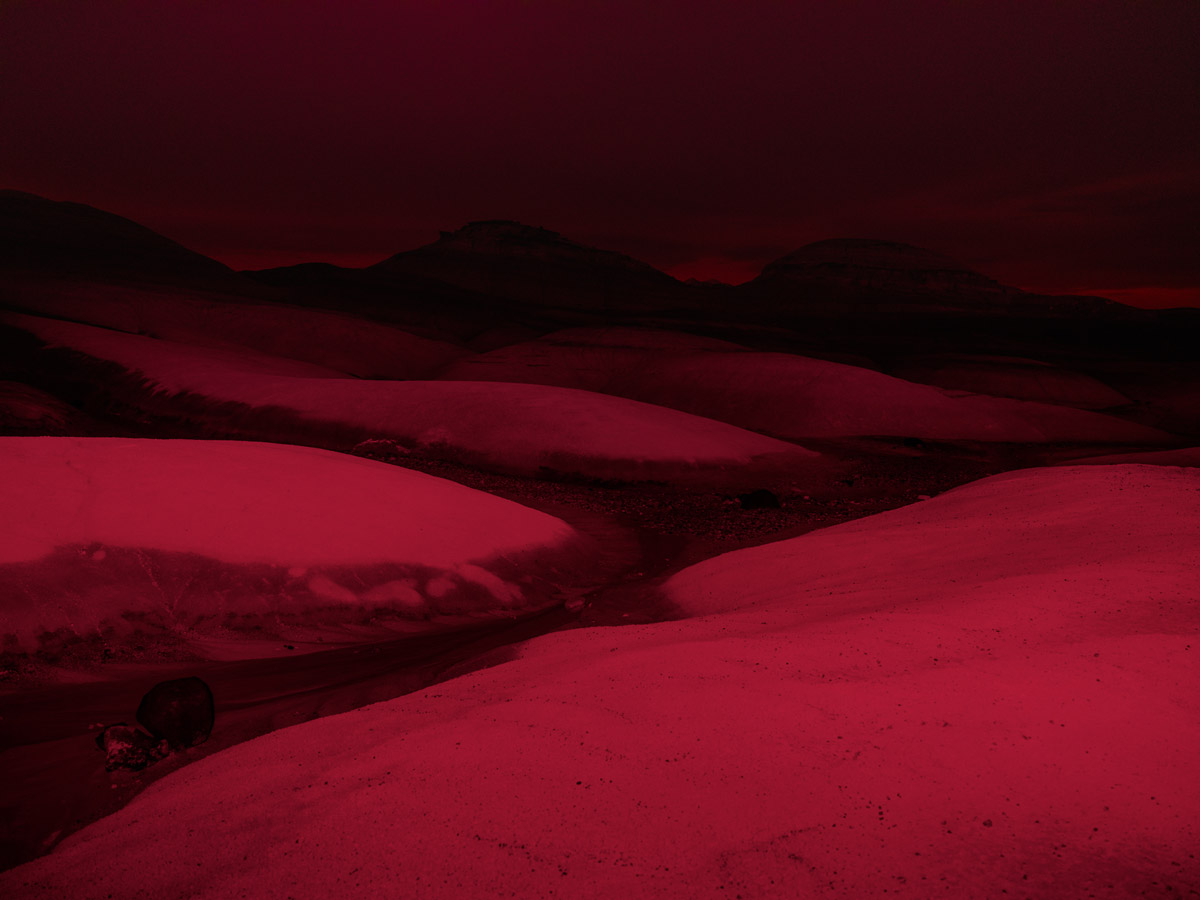

















When the photographer Snezhana von Buedingen first visited Sofie’s family at their farm in east Germany, she stayed for three days. She spent her waking hours shadowing Sofie, taking her time to soak in the details of her everyday life. With time, the pair forged a powerful bond; Meeting Sofie is the photographer’s ongoing ode to her friend and muse–a young woman who happens to have down syndrome.
Sofie comes from a family of famous antique dealers, and their residence has served as a magical setting for von Buedingen. “Their whole house is decorated in a very unique and tasteful way,” the artist says. “Every piece of furniture or picture on the wall has a history to tell.” Sofie herself spends her time with friends and her boyfriend, and she helps out at home; she likes painting and music, and she just turned twenty years old. Von Buedingen says, “Like almost every young woman, she dreams of a great romantic love.”
The farm where Sofie grew up has a long and storied past, but von Buedingen’s work is as much about her future as it is about her childhood. Currently, Sofie stands on the precipice of change. She plans to intern in Berlin soon, and, despite the many enchanting hours they shared in the yard, von Buedingen’s most powerful memory of their time together actually took place in the big city. As they sat in a cafe awaiting lunch, a homeless man approached their table. Sofie asked him how he was, and he admitted that no one had ever asked about his life. “I feel that Sofie’s question was worth more to him than the money he had asked for,” the photographer tells me.
“Sofie, like many people with DS, finds it difficult to speak,” von Buedingen says. “I wish she could express in words all that she feels and thinks. I have a feeling that, in society, there is a slightly guarded attitude towards people with DS.” In introducing the world to Sofie, she hopes to foster a sense of connection and recognition. “I wanted to show that she has the same feelings, the same longing for love and security, as every one of us,” she adds. As for Sofie, the collaboration has been a joyful process. When she received the first print, a portrait of herself and her mother, Sofie said simply, “This is a dream.” The photographer admits, “I hope we remain friends forever, and I will continue to take photos of her as long as I can.”
You can see Meeting Sofie at the Stadtmuseum in Cologne this spring and on the artist’s website www.vonbuedingen.com and follow von Buedingen on Instagram at @snezhana_von_buedingen.
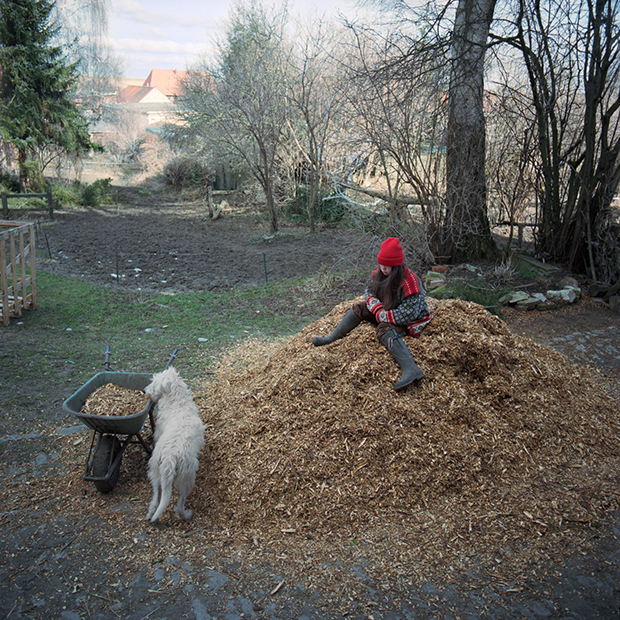


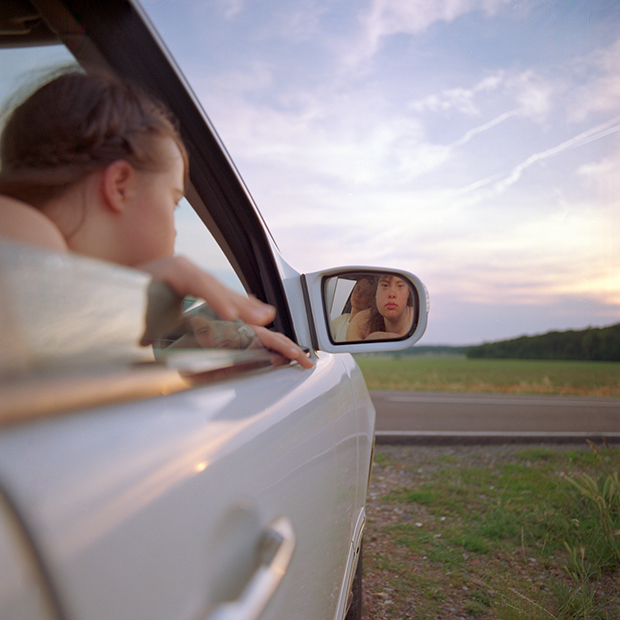


All images © Snezhana von Buedingen
The post The Life of One Young Lady with Down Syndrome, in Photos appeared first on Feature Shoot.
In the early 1900s, Paul Thulin’s great-grandfather settled on the coast of Maine, reminded of his homeland of Sweden. Thulin’s family has returned to Gray’s Point each summer ever since, and Thulin has been working on a project there, called Pine Tree Ballads, for over a decade. Initially inspired by his grandfather’s photographs, he hopes it has “a subtext of struggle and hope that mirrors my narrative sense of self and heritage”.
BJP: How did you first get into photography?
PT: My journey into photography started as a way to rebel against my growing contempt and frustration with the limits of language to effectively communicate. In 1996, I returned from a stressful year of studying Philosophy in a Master’s program at Syracuse University and I remember wanting to escape into the mountains to possibly join a Zen monastery. I wanted to meditate and remain silent in an effort to really just experience the world.
This desire led me to discover the writings and images of photographers Minor White, Frederick Sommer, and Emmet Gowin, as their mystical and spiritual use of photography intrigued me. Before I knew it, I borrowed a 35mm camera to try to make meaningful images of my own and I was hooked.
BJP: What do you love about photography? What’s the biggest lesson it’s taught you?
PT: All moments in time are decisive moments. Photography has never failed to challenge me to discover the miraculous hidden within the ordinary.
BJP: What was the origin of Pine Tree Ballads – how did the concept come to you?
PT: Originally, I was casually documenting my family with all kinds of cameras, film, etc. during the summer months on the old orchard farm. I was following the footsteps of my grandfather who took lots of snapshots of the family for his homemade photo albums that spanned over 65 years of history with the land; I was completely obsessed with looking at these images.
At some point, I came to the realisation that images of family are deeply profound, and could be the source material for an interesting multi-year project. I began to reconsider my images and treat them as a unique family story intended to be ‘authored’ for the looking/reading of future generations.
BJP: You describe the project as a ‘photographic memoir’, what does this personal process mean to you?
PT: Pine Tree Ballads is my folktale, my emotional, spiritual, rational, and experimental ‘documentation’ of family, place, and time; it is my version of the truth. My real time experiences and memories of family, farm life, and landscape are an amalgamation of the photographic representations in my grandfather’s photo archive, my personal production of Pine Tree Ballads, and an unmediated engagement of everyday events. I cannot imagine my family or the landscape outside the realm of images unveiling a never-ending story. The past and the present are intertwined as I work on the project.
BJP: There’s a strong sense of the material process in the images, which are full of light leaks and scratches. What motivated these choices?
PT: The first edit of Pine Tree Ballads happened about six years ago and looked nothing like it does today. Most of the images were straight documentary inspired by photographers exploring family, such as Jessica Todd Harper, Doug Dubois, and Sally Mann. I was looking to document everyday relations within a glow of cinematic and/or painterly light; a common aesthetic of modern day romanticism we all know too well.
At some point, I realised that in addition to these images I had all these amazing, formally complex, bad exposures and scans in a variety of different formats, captured both digitally and on film, that just did not fit stylistically. The images looked unique so I was curious if I could make something out of them that celebrated their flaws as an attempt to redefine so-called straight photography. It is quite liberating to allow the medium to simultaneously adopt the high fidelity depiction supported in traditional straight photography, while also aesthetically and formally appreciating evidence of photographic processes and the material deterioration of an archive.
BJP: Memory and history are major themes in this project, with your family’s early 20th century move to Maine. How do you go about portraying an era you have a connection to, but no direct experience of?
PT: Folklore is in essence a tradition of history shared amongst a region, tribe, or in my case, a family. The history and identity of our family thrives on stories of the past, an awareness of sharing knowledge, and the privilege of participating and contributing to a mythology interweaving past and present.
I see the orchard farm, the shore, the pine trees, the granite, the muck, the gusting winds as natural elements and the symbolic essence of my family narrative. To make, I had to know the story of a photographic moment in context of a particular shared history of looking, rather than attempting an unbiased, neutral examination of a document depicting a subject in a moment in time.
BJP: This is a project about family, but it isn’t your traditional album of snapshots and portraits. Why did you avoid those types of image?
PT: Pine Tree Ballads can be aesthetically identified through its purposeful and often ambiguous depiction of photo-based materiality, which serves to provide a highly-edited family archive with structural and literary complexity. I feel I am as much an author and artist as I am the family documentarian. This series is a narrative-driven, photographic and textually-inspired artwork that serves as a “docu-literary” interpretation of my family’s identity in relation to a specific landscape, a collection of photo albums and oral histories, physical landmarks, and cultural influences. My goal is to reference the traditional family album without being constrained by its methodological and subject-based limitations.
www.paulthulin.com Pine Tree Ballads by Paul Thulin can now be pre-ordered from Candela Books https://store.candelabooks.com The series is also going on show from 28 February – 20 April at Candela Gallery, 214 West Broad Street, Richmond, VA 23220, USA https://candelabooks.com/gallery/

From Pine Tree Ballads © Paul Thulin

From Pine Tree Ballads © Paul Thulin

From Pine Tree Ballads © Paul Thulin
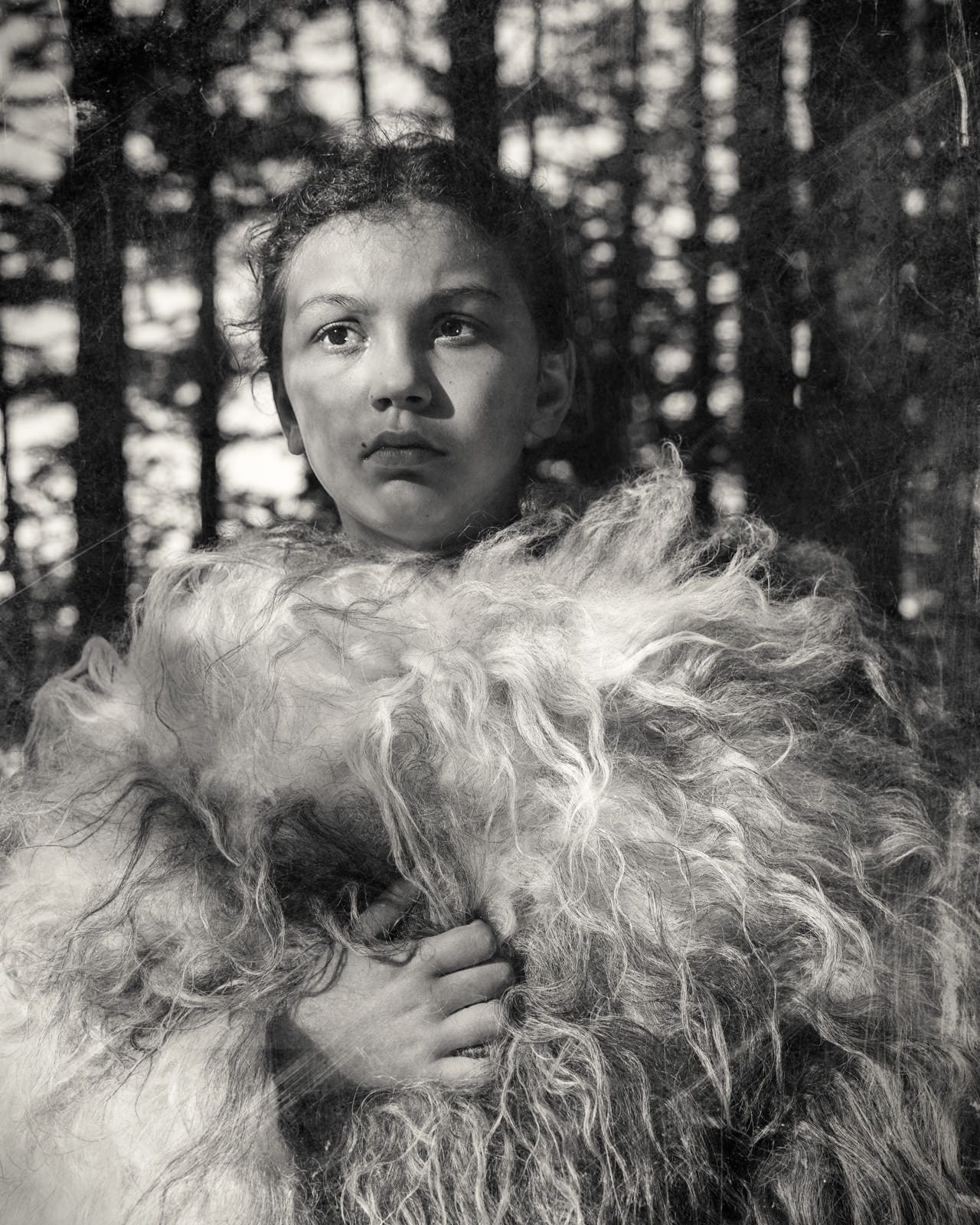
From Pine Tree Ballads © Paul Thulin

From Pine Tree Ballads © Paul Thulin

From Pine Tree Ballads © Paul Thulin

From Pine Tree Ballads © Paul Thulin

A family album can offer us a way of entering into dialogue with our personal history. Through piecing together the fragments of our past, we can come to understand our present. But what if the photographs don’t exist? Alba Zari’s project The Y takes the absence of her father as its starting point. Using photography as a tool of investigation, she analyzed her family archive for clues that pointed to who he might be, employing various image technologies to create a visualization of the man she never knew.
It was at the age of 25 that Zari discovered she had a different biological father to her Thai brother. Only a few details of this mysterious figure existed: he met Zari’s mother in Bangkok in 1986, he probably worked for Emirates Airlines, he was most likely Iranian, and his name was Massad. From that day on, Zari felt her own identity transform, and an urgent need to reconnect the missing links and find her father took over. “I used the medium and language I knew the best to try to find him: photography,” she says. “Like a forensic investigator, I methodically started to look for traces of Massad.”
From the start of the project to its end, Zari’s photographic quest has grown from the gaps in the information she does have. The project began in the family archive, looking for clues in pictures of her childhood in Thailand. “I had to rethink my past,” she explains. “So I painted an unknown silhouette onto all the pictures where my putative father is, imagining Massad into the family pictures.” The next step was a DNA test to trace her ancestral origins. Women inherit only two X chromosomes, so her paternal genetic information couldn’t be read. In face of the missing ‘Y’ of her father, her search quickly evolved into a hunt for “objective truth,” which would lead her into scientific territory and across several different photographic languages.
For Zari, images were both the source of investigation and the outcome. “I used photography, especially in the physiognomic part of the investigation, as an analytical language. As Cesare Lombroso used the camera to study features of his patients, I started to compare my features to my maternal line ones, and through a process of elimination, I would find the features of the father I never met,” Zari explains. “I arrived to the conclusion that my eyes, nose, mouth, skin tone should look like Massad.” Turning the camera on herself, as well as her brother and her legal father, Zari was then able to construct a 3D avatar of what he could look like based on her investigations using ‘MakeHuman’ and ‘Blender’ 3D software.
While this ‘image’ serves a practical function – Zari will run it through facial recognition technology to search for her father on social networks – it’s true importance is a personal one. “After all of the research, I was not able to find any other information. My strongest desire was to find an image of him where I could reflect myself,” she says. “I created his image for peace of mind, and to prove his existence.” Using scientific methods helped Zari work her way through this deeply emotional journey, with every discovery and failure acting as a step closer to her missing father. “Even if I used a scientific approach, his identity is still mystery. There is this quote by Polish poet Wisława Szymborska that I really love: ‘Such certainty is beautiful, but uncertainty is more beautiful still.’”
Enjoy more great photography:








“Most people would walk by a dump pile and assume that there’s no picture there,” says global industrial landscape photographer Edward Burtynsky. “But there’s always a picture, you just have to go in there and find it.” Born in Canada in 1955, Burtynsky has been investigating human-altered landscapes in his artistic practice for over 35 years, capturing the sweeping views of nature altered by industry; from stone, to minerals, oil, transportation, and silicon. “Of course, it’s important to me to make sure that my pictures are attractive to the eye,” he says. “But beneath the surface there’s always a bigger, deeper environmental issue.”
His latest exhibition, The Anthropocene Project, is directly influenced by the proposed new geologic era ‘Anthropocene’ – introduced in 2000 by chemist and Nobel Prize winner Paul Jozef Crutzen, to represent a formal recognition and acknowledgement of the “human signature” on the planet. Experts argue that the end of the current epoch has been marked by striking acceleration since the mid-20th century of carbon dioxide emissions and rising sea levels, the mass extinction of global species, and the transformation of land by deforestation and development. Burtynsky hopes to demonstrate this.
“Scientists do a pretty terrible job of telling stories, whereas artists have the ability to take the world and make it accessible for everyone,” says the 63-year-old. “We are having a greater impact on the planet than all the natural systems combined. I’m trying to let people know that.”
The Anthropocene Project includes photographs of the biggest terrestrial machines ever built in Germany, concrete seawalls in China that now cover 60 per cent of the mainland coast, and psychedelic potash mines in Russia’s Ural Mountains. Burtynsky says that in order to make an impact it was important to capture the largest examples of extractions of the planet, which explains why he visited a mighty 20 countries over a period of five years.
“The world is my subject matter, so I travel wherever the subject is,” he says. “I don’t exactly travel lightly either.” If fact, anything but; when producing the series, he travelled with 24 different cases, containing drones, film cameras, and five different cameras. Unusually, however, he didn’t travel alone. Burtynsky worked alongside filmmakers Jennifer Baichwal and Nicholas de Pencier to create the series, which includes a book, documentary film, in addition to virtual reality.
“It’s been an interesting journey, but not without its complexities, challenges and tensions,” he says. “I’m used to working by myself in the studio, so the biggest challenge for me was working with others to get decisions made. But it’s all finally come together really quite nicely.”
The Anthropocene Project is on show at the National Gallery of Canada and Art Gallery of Ontario until 06 January. The exhibition has been organised by the Canadian Photography Institute, National Gallery of Canada, and the Art Gallery of Ontario, in conjunction with MAST Foundation, Bologna, Italy.
The Human Signature by Edward Burtynsky is on show at Flowers Gallery, Cork Street, London until 24 November www.flowersgallery.com/exhibitions/view/edward-burtynsky-the-human-signature
Anthropocene by Edward Burtynsky is published by Steidl (€95) https://steidl.de/Books/Anthropocene-3747495254.html?SID=9atjxbX2418a
Follow #Anthropoceneproject for updates.

Cerro Dominador Solar Project #1, Atacama Desert, Chile, 2017 © Edward Burtynsky, courtesy of Flowers Gallery, London/ Nicholas Metivier Gallery, Toronto.

Oil Bunkering #4, Niger Delta, Nigeria, 2016 © Edward Burtynsky, courtesy of Flowers Gallery, London/ Nicholas Metivier Gallery, Toronto.

Edward Burtynsky on location at SQM lithium operation. Photo: Jim Panou, courtesy of Anthropocene Films Inc.© 2018

Saw Mills #1, Lagos, Nigeria, 2016 © Edward Burtynsky, courtesy of Flowers Gallery, London/ Nicholas Metivier Gallery, Toronto.
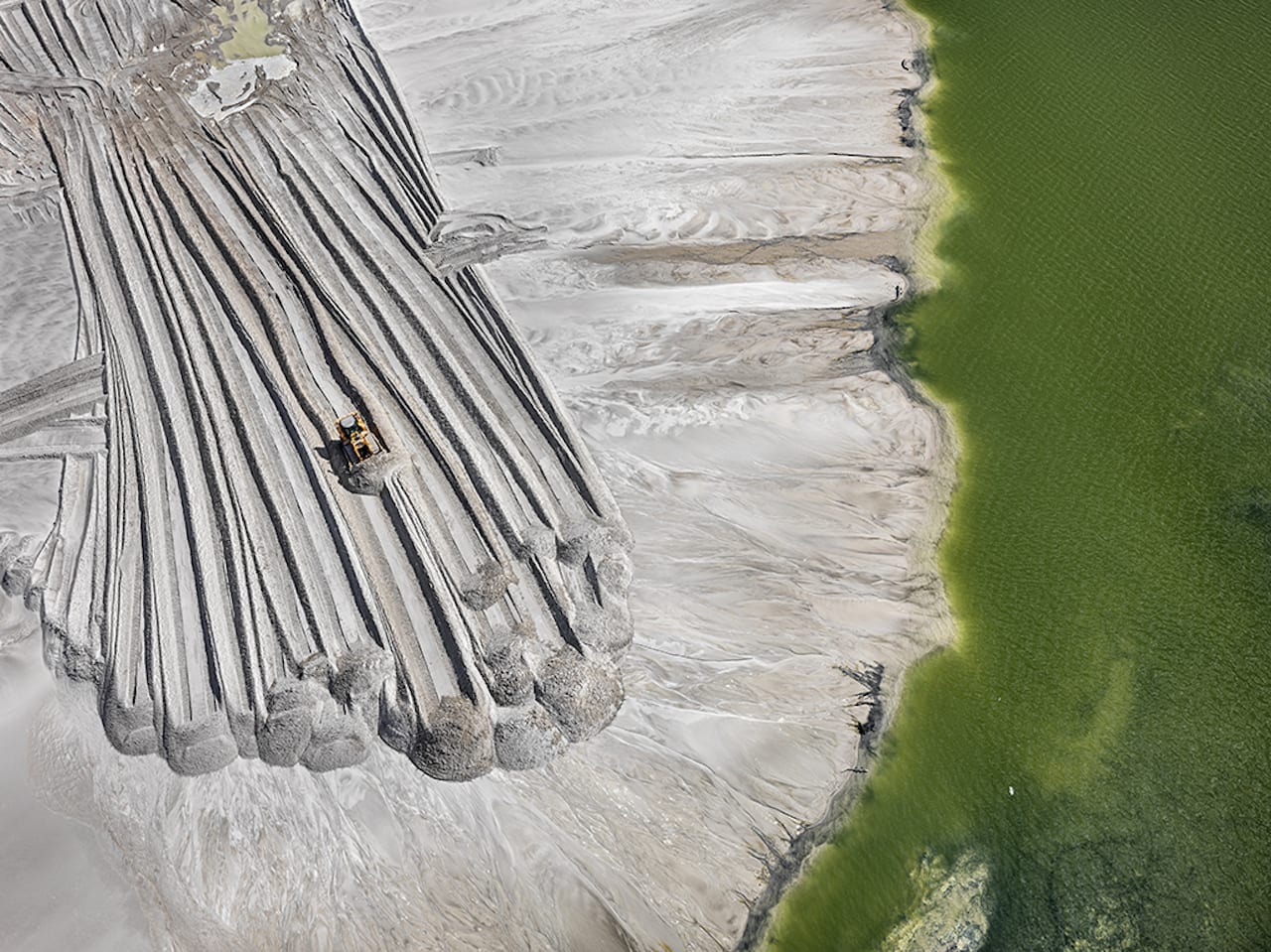
Phosphor Tailings Pond #4, Near Lakeland, Florida, USA 2012 © Edward Burtynsky, courtesy of Flowers Gallery, London/ Nicholas Metivier Gallery, Toronto.

Nicholas de Pencier and Jennifer Baichwal with drone pilot Mike Reid on location at a clearcut area north of Port Renfrew, Vancouver Island, British Columbia. Photo: TJ Watt, courtesy of Anthropocene Films Inc. © 2018

Coal Mine #1, North Rhine, Westphalia, Germany, 2015 © Edward Burtynsky, courtesy of Flowers Gallery, London/ Nicholas Metivier Gallery, Toronto.

“Les Pêcheurs de Rêves” (The Fishermen of Dreams) is a small, family circus based in France. The company consists of a husband and wife duo, Vincent and Florence, who play the roles of Za and Krapotte, two married clowns. In the performance, they make a parody of their own life and of marriage itself. Krapotte, like Florence, is the strong one in the couple, while Za (Vincent) does anything to please her.
Real life mixes with fiction in this show, and their belief in their artistry is strong. For example, Florence and Vincent married under a “clownesque regime,” a name they invented to demonstrate their faith in the characters they have created and continue to interpret. For them, the circus is not just a job or a pastime but represents something deeper—the ability to dream.
Inspired by this creative couple and guided completely by my instincts, I plunged into the sound and meaning of their name, “The Fishermen of Dreams.” I embarked on an oneiric journey, letting the story flow through me and slowly reveal itself to my camera. I became so involved to the point of wanting to take part in their narrative; I wanted to understand how it feels to be truly free, like Vincent and Florence. In a society that forces conformism, theirs is an unconventional, even courageous, lifestyle.
With them I experienced the deep meaning of being part of a “circus family.” I saw the curiosity of the couple’s children left free to express itself in a universe of their own creation; I witnessed them take lessons from the school of life. I understood the huge commitment and the immense labor that goes into the preparation of each show. I learned how important constant confrontation can be—how it’s essential to work through one’s unspoken feelings. Finally, I faced the simultaneous beauty and difficulty of living so authentically, in such close and constant contact.
For me, the camera is a tool that allows me to live the life of others. Here, photography became my medium to connect to their world. The photograph becomes a wide open channel that permits me to become carried away by my passion for humankind.
This family of “dream fishermen” have happy souls and retain a proximity to a world that we are unfortunately forgetting. After all, the circus is a confirmation that humanity still exists in our hyper-technological world. In the space of the circus, connections are made thanks to words that come out of people’s mouths, eyes that look and make contact, and faces that dramatically express those emotions which all too often remain hidden in the “real,” everyday world…
—Stephanie Gengotti
This is the second chapter of a long-term project about family life in contemporary, itinerant circuses. Every chapter tells the story of a different family. Explore the first chapter, Amori Nomadi.
Gengotti’s project was singled out by the jury of the Emerging Talent Awards 2017. See all of the inspiring projects from this year’s 50 talents!
Enjoy more great photography:


















© Adam Urban

© Tamas Urban
It took time for the Hungarian photographer Adam Urban to earn the trust of the inmates at Aszód Juvenile Detention Center. Understandably, the young men were wary of “outsiders.” In fact, it took weeks for Urban to bring out his camera out for the first time.
Forty years before Adam Urban set foot in the Aszód Juvenile Detention Center, another photographer had embarked on a similar project. In 1975, Tamas Urban, Adam’s father, had completed a series of images at the same location. While the project was well-received by Tamas’s teachers, it was banned during its first exhibition, which took place at the center.
Those early photographs document a reality most journalists avoided at the time, and their implications ran against the overarching themes the government hoped to impart to the public. “At that time, the socialist regime was still strong,” the younger Urban explains. “The key messages were that despite the tough circumstances, our country was developing and performing well, thanks to the efforts of the party and the dedication of the working class. Evidence, such as these pictures, would have undermined the credibility of the system.” A party representative in attendance at the exhibition prohibited it from traveling behind the facility.
And the photographs remained in the basement of the Aszód center for decades, tucked beneath a broken piano leg. We’ve included one of Tamas’s images at the top of this story, and the collection can be seen here. Inspired by Tamas’s courage and years of family stories, Adam eventually reached out to the new director, who not only helped locate the old photographs but also allowed Adam to take new pictures of his own. Much had changed, he says, but the young people and the struggles they faced remained the same.
Being detained at the Aszód facility is, of course, a punishment for the crimes these minors have committed, but it also offers opportunities for them to make changes and start on a different path. The inmates follow strict routines, and depending on their situations, they might go to school or learn a trade. If they have attempted escape in the past, some might be moved to a more secure location during the day.
With an eye towards introducing inmates back into society, the facility has a commitment to what Urban calls a “moral and ethical education.” While they are here, young people celebrate holidays and are welcome to attend chapel and study religion. There’s also a dog, adopted as a stray by the community. Many of the inmates have grown fond of the animal, and they cherish time spent with him.
Like his father before him, Urban was able to establish a rapport with some of the inmates. “I approached the youngsters with extra care,” he tells me. “I knew if I want to make intimate pictures, I couldn’t just push my camera into their faces.” He learned the rules that governed the place, and slowly, he took out his camera. He forged bonds with individuals, though he can’t predict what will happen to that connection when they are released. He would be glad to keep in touch, though he doesn’t know if it will be possible.
In Urban’s view, a photojournalist must remain impartial. “It is not our role to get to conclusions, identify patterns, or draw arcs,” he insists. “Historians, political and social scientists can do that through our works.” Through two generations now, his family has documented truths that existed during specific points in our shared history. What happens to the photographs now remains out of his hands, but he still carries the memories from his time at the Aszód center. More than once, he was invited to join the team as a tutor at the facility. “I still treasure it,” he tells me.
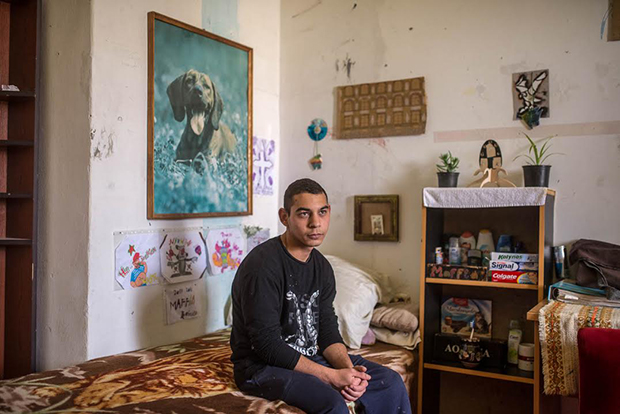
© Adam Urban

© Adam Urban
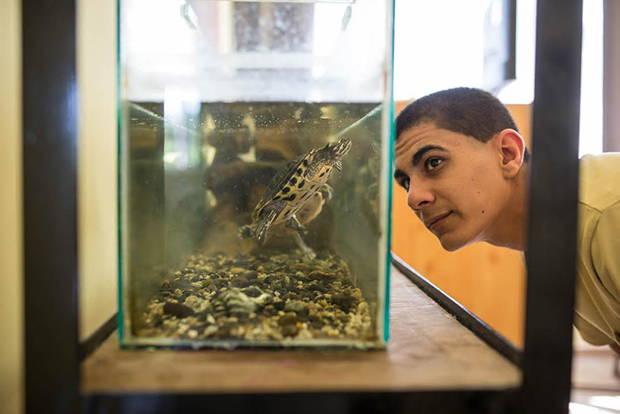
© Adam Urban

© Adam Urban

© Adam Urban

© Adam Urban
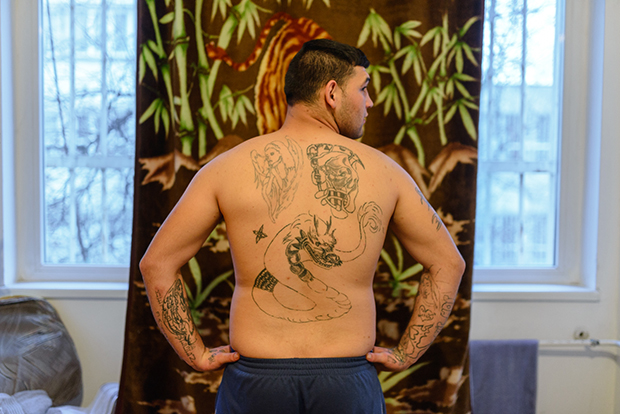
© Adam Urban

© Adam Urban

© Adam Urban

© Adam Urban

© Adam Urban
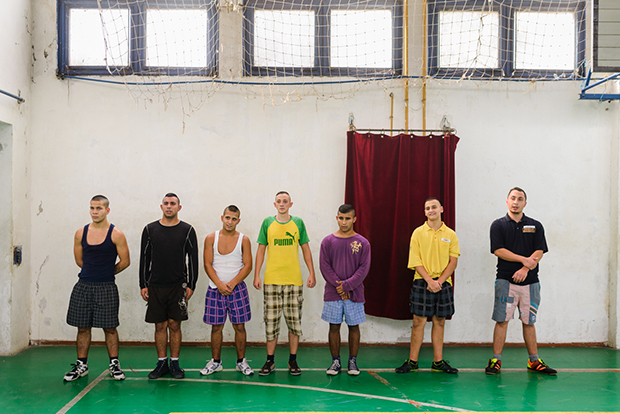
© Adam Urban

© Adam Urban
The post Behind-the-Scenes at a Hungarian Juvenile Detention Center appeared first on Feature Shoot.

WeTransfer Studios, which is known for supporting creative projects, presents a new online exhibition in collaboration with iconic American photographer Ryan McGinley.

In collaboration with photographer Prue Stent, the series of artist Honey Long titled “Soft Tissue” captures the female body focused on different body parts appearing like a dreamlike landscape.


Above is the “Know Anon” code that allows you to expose any hateful anons you wish at your own whim. If you know anyone who’s struggling with anonymous hate, reblog this for them.
- How to install
Simply copy the above code and paste it right after the
portion of the HTML coding on your blog. This is with the jQuery script included, so everything should be covered. Once you’ve done this, update and save, then exit your customize page.Re-enter your customize page, and under “appearance” should be a button called “Enable Know Anon”, which may be on or off automatically, depending. Flip the switch to enable or disable it, then save.
- How to use
When you get anonymous hate or anon messages you find offensive, simply exit your Inbox, enter your Customize page, flip the switch to “on”, then save and exist. Re-enter your inbox, and any and all anonymous messages will be exposed with a URL, if they have one. Note that this includes everything, not just the hate. Another thing to note is that, once you expose anons in the inbox, you can’t un-expose them. Flipping the switch back to “off” does nothing.
Answer a message people thought was on anon, and gee, they’ll get a nasty little surprise, hmm? It’s better than a fake anonymous button because while you still can’t control who it exposes, you can control when to do so.
Remember though, that this isn’t the only way to stop anonymous hate. As always, there’s simply the “turn anonymous asks off” button. And thanks to the update from a few months ago, anons CAN be blocked.
That little hand right there? That’s the ignore button. It’s present on all asks sent, whether anon or otherwise. When you block an anon, you have the option to report them for spam or harassment, and it will permanently block them. It also blocks the IP address and computer, so that person can’t take advantage of extra accounts to continue sending you hate. It effectively wipes that person right out of your Tumblr life. They cannot contact your blog again, ever.
For the website that gives you the Know Anon code, with or without jQuery script, in case that causes trouble (most themes come with it pre-installed, but not all), go here.
[ Goodness, wow thank you very much for letting me know this existed! That was very considerate of you! ]
EVERYONE WHO HAS BEEN GETTING LITTLE NO-LIFE SHITHEADS BOTHERING THEM.
Here you go.
In case no one knew about this
It’s on and poppin’ now @madsrocketship yassss thank you!

Located halfway between Scotland and Iceland, Faroe Islands is an archipelago that still remains relatively untouched by tourists. Photographer Kevin Faingnaert hitchhiked across the country to capture the thrilling landscapes and dramatic coastline, but most of all to meet its welcoming people.
 Imagine a private sanctuary, with tranquility and balance where the smallest details have been lovingly designed for you to solely enjoy. Imagine a place that surprise you, ensuring your privacy. It’s Kenoa, a gorgeous eco-chic design resort in front of the beach of Barra de São Miguel, Brazil, a place where luxury is defined by […]
Imagine a private sanctuary, with tranquility and balance where the smallest details have been lovingly designed for you to solely enjoy. Imagine a place that surprise you, ensuring your privacy. It’s Kenoa, a gorgeous eco-chic design resort in front of the beach of Barra de São Miguel, Brazil, a place where luxury is defined by […]

“I started out trying to create buildings that would sparkle like isolated jewels”, said Zaha Hadid (1950-2016). “Now I want them to connect, to form a new kind of landscape, to flow together with contemporary cities and the lives of their peoples.”
 You should watch this CNN Style exclusive on Moschino creative director Jeremy Scott. Born in Kansas City in 1975, he showed his first collection for his eponymous label at Paris Fashion Week in 1997 and has since spent almost two decades livening up runways in New York, Milan and London.(...) Read More about Jeremy Scott […]
You should watch this CNN Style exclusive on Moschino creative director Jeremy Scott. Born in Kansas City in 1975, he showed his first collection for his eponymous label at Paris Fashion Week in 1997 and has since spent almost two decades livening up runways in New York, Milan and London.(...) Read More about Jeremy Scott […]

For its new Adrenaline issue, Kinfolk magazine commissioned photographer Aaron Tilley and London-based set designer Kyle Bean to create a series of images that will set would bring their audience apprehension. The result is "In Anxious Anticipation".
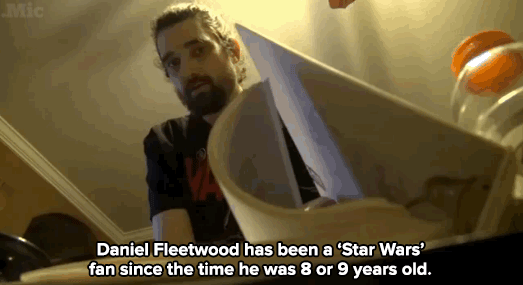
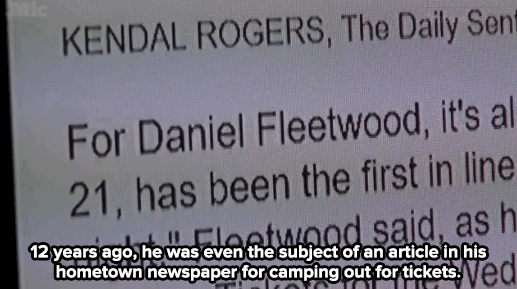
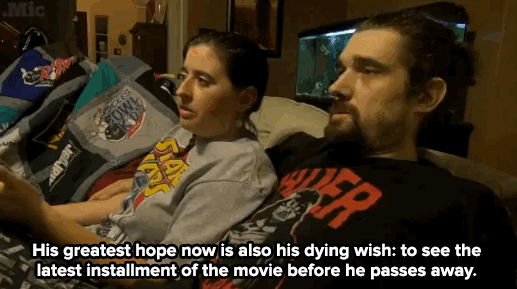
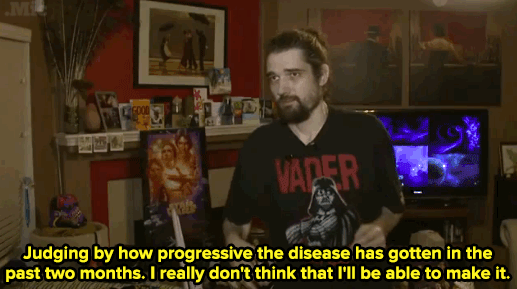

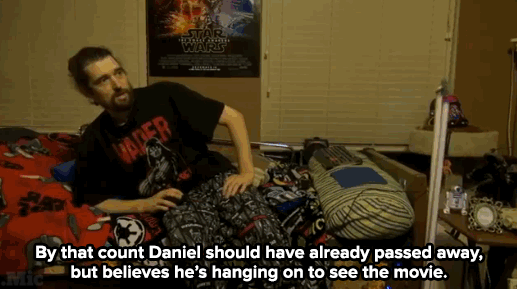
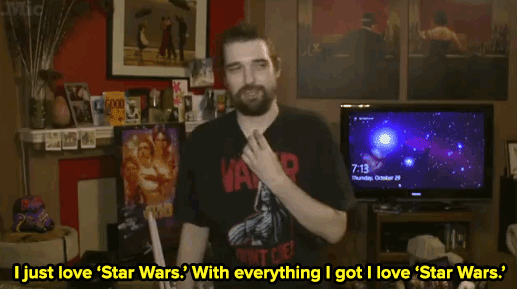
Fleetwood and his wife have set up an online petition to get him to see ‘The Force Awakens,’ while the fans and supporters have rallied around the #ForceForDaniel hashtag on Twitter. His wish has even caught the eye of some of the film’s stars.

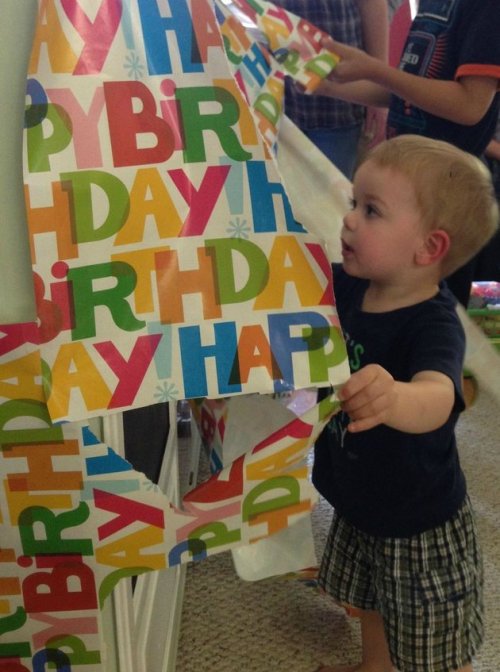

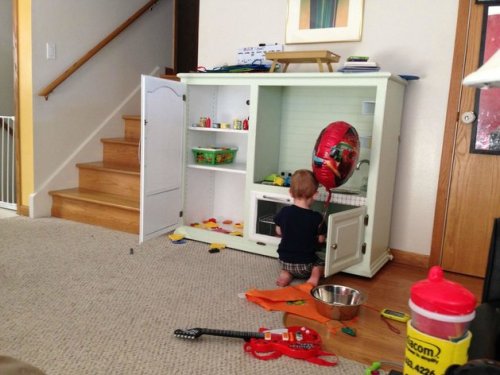



Owen, 2, loves to watch his parents cook, so his father, Andrew Hook, built a kitchen play set for his birthday and shared an image of the creation on Imgur. Then came out the trolls. Apart from the comments above, users called the toddler a “f****t,” said they hoped the child would get “beat up at school” and told him to “rename your son Caitlyn."
"Let me be perfectly blunt,” Hook reportedly wrote back. “Fuck you …”

Here's the first trailer for Experimenter - a film by Michael Almereyda about social psychologist Stanley Milgram, who conducted a number of controversial "obedience experiments" at Yale University back in 1961.
Words are often not enough and The One Project not only understands that, they’ve launched a Kickstarter specifically designed to help those battling depression and anxiety learn how to express themselves through the healing art of photography.
The community-fostering approach also aims to work toward de-stigmatizing mental illness. Considering the fact that mental illness affects one in five Canadians (and almost half never seek treatment!) this is definitely a project worth checking out. Watch the full promo video below to learn more.
Environmental charity Hubbub (in collaboration with Common Works) has figured out a way to trick litterers into being better human beings! Capitalizing on Londoners’ love of sports and strong opinions, smokers can now use their cigarette butts to make their voices heard on various burning questions, like whether Cristiano Ronaldo or Lionel Messi is the best in the world. They’ve also got a great campaign turning chewing gum into dot-to-dot drawings! See below.

While on a trip to visit the Ijen and Bromo Tengger Semeru volcanoes in East Java last month, Chicago-based photographer Reuben Wu captured the unusual sight of molten sulphur that flows from fumaroles at the base of the Blue Fire Crater at Ijen. The area is usually swarming with tourists, but Wu stayed after sunset until the moon rose to capture these otherworldly images.
The journey into the Ijen Caldera is not for the faint hearted. A two-hour trek up the side of the rocky volcano is followed by another 45-minute hike down to the bank of the crater. The blue fire found at the base is the result of ignited sulphuric gas that burns up to 600 degrees Celsius (1,112 degrees Fahrenheit) and can flare up to 5 meters (16 feet) into the air. It is the largest “blue flame” area on Earth.
Additional photos from Wu’s trek through Indonesia can be seen here. (via Colossal Submissions)







Visit our Flickr gallery featuring photos of active and dormant volcanoes throughout the world, as well as lava formations and crater lakes. Be sure to leave your comments! Here is a preview. Enjoy!

David O. Russell (American Hustle, Silver Linings Playbook) has once again reunited the big name pairing of Jennifer Lawrence and Bradley Cooper for his new film Joy. It tells the wild story of a family across four generations, centring on Joy Mangeno (Lawrence) who founds a business dynasty after inventing the 'Miracle Mop'. Cooper plays an executive from the Home Shopping Network who helps Joy sell her product. The film also stars Robert De Niro, Isabella Rossellini and Virgina Masden. It’s already being touted as a contender for major awards next year and has the awards season friendly release date of 25 December in the US and 1 January in the UK. Watch the trailer above!
A boisterous, squeaky river otter pup, orphaned last month near Cottage Grove, Ore., has just taken up residence at the Oregon Zoo.
A passing motorist spotted the young otter wandering alongside Highway 58 on June 20, and alerted a local wildlife rehabilitator who collected and cared for the animal while final placement was determined by staff at the Oregon Department of Fish and Wildlife.
"He is playing in his pool, eating voraciously and grooming himself — all behaviors we want to see right now."
—Julie Christie, senior keeper
The pup, just a couple of months old at the time, was alone, hungry and dehydrated, but was rescued by the Chintimini Wildlife Center in Corvallis. Since the young otter would not be able to survive in the wild without its mother, ODFW contacted the Oregon Zoo to see if it had space available once the pup's health stabilized.
Last Thursday, the tiny pup was transferred to the zoo, where he is currently in the care of veterinarians and keepers. He's estimated to be about 2 or 3 months old, and weighed a little over 4 pounds on arrival.
"He's a spunky little otter," said Julie Christie, senior keeper for the zoo's North America section. "ODFW acted quickly when the lone pup was reported and Chintimini Wildlife Center did a terrific job nursing him back to health. He is very active in his current home. He is playing in his pool, eating voraciously and grooming himself — all behaviors we want to see right now."
Visitors won't get a look at the youngster until later this summer, when he joins the zoo's two adult otters Tilly and B.C. in their Cascade Stream and Pond habitat.
"We have a very good track record with orphaned otters," Christie said. "Our adult otters, Tilly and B.C., were also rescued animals who had a rough start to life."

Tilly, named after the Tillamook River, was found orphaned near Johnson Creek in 2009. She was about 4 months old, had been wounded by an animal attack and was seriously malnourished. Once her health had stabilized, Tilly came to the Oregon Zoo in a transfer facilitated by the Oregon Department of Fish and Wildlife, which oversees the species' protection.
B.C. (short for Buttercup), was found orphaned near Star City, Ark., also in 2009. He was initially taken in by the Little Rock Zoo, but transferred here the following year as a companion for Tilly. The two otters hit it off quickly and have produced two offspring, Molalla and Zigzag. Both are now grown and living in Seattle — Mo at the Seattle Aquarium and Ziggy at the Woodland Park Zoo.
Once threatened by fur trappers, North American river otters are now relatively abundant in healthy river systems of the Pacific Northwest and the lakes and tributaries that feed them. Good populations exist in suitable habitat in northeast and southeast Oregon, but they are scarce in heavily settled areas, especially if waterways are compromised. Because of habitat destruction and water pollution, river otters are considered rare outside the region.
Metro, the regional government that manages the Oregon Zoo, has preserved and restored more than 90 miles of river and stream banks in the region through its voter-supported natural area programs. By protecting water quality and habitat, these programs are helping to provide the healthy ecosystems needed for otters, fish and other wildlife to thrive. River otters are frequently observed in Metro region waterways.



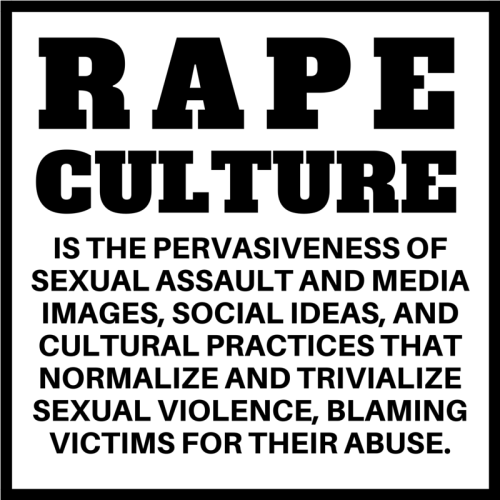
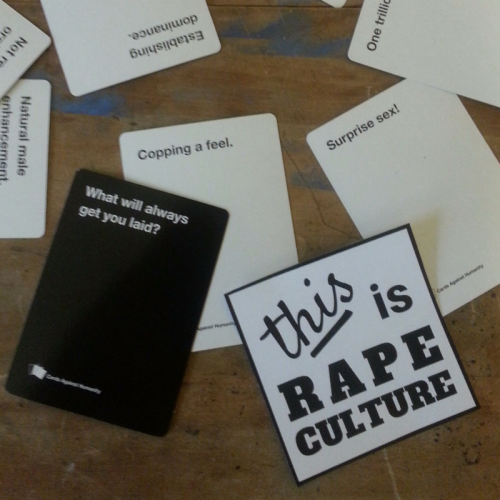





Follow SexEdPlus for more stuff like this.
Want some ‘this is RAPE CULTURE’ stickers?
Order 10 for $5 RIGHT HERE!